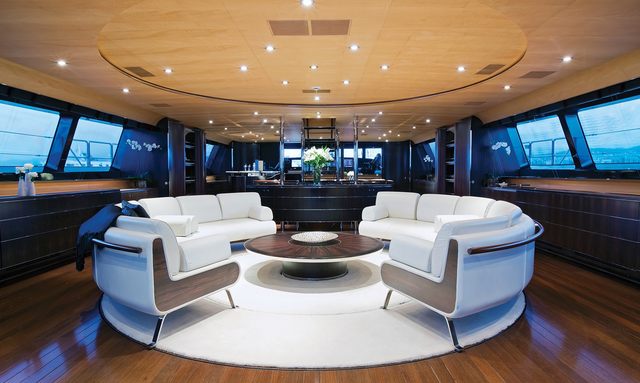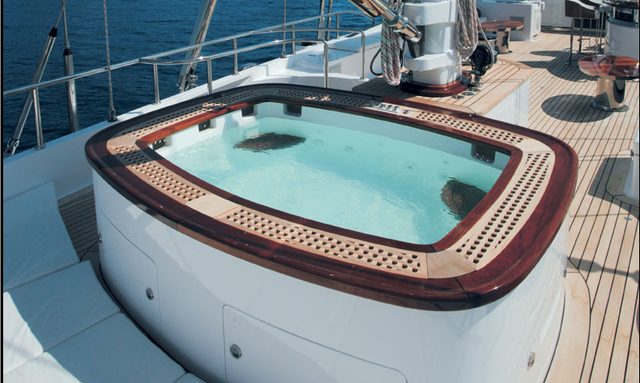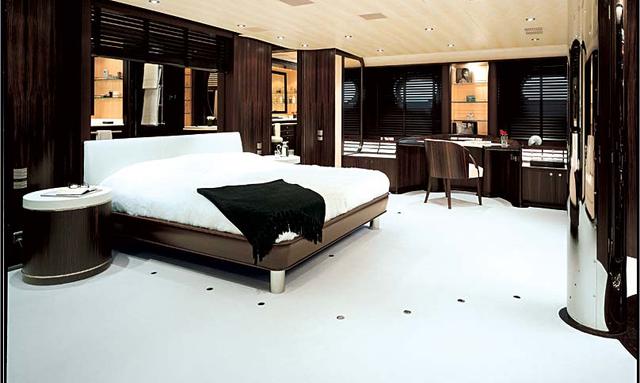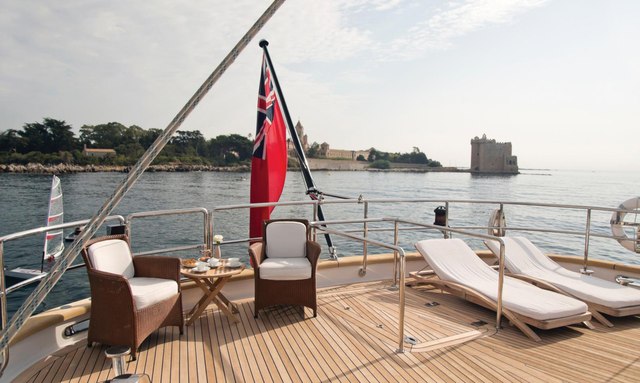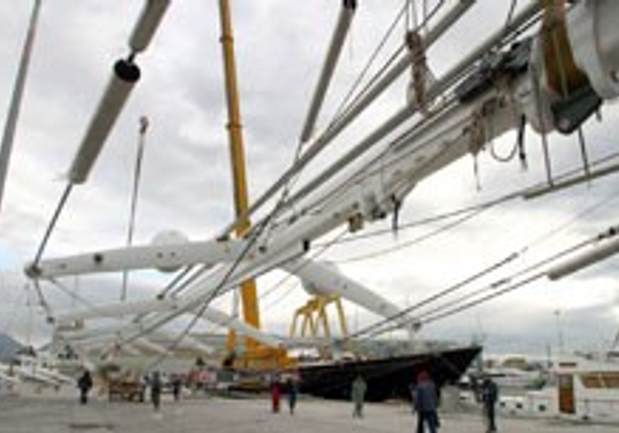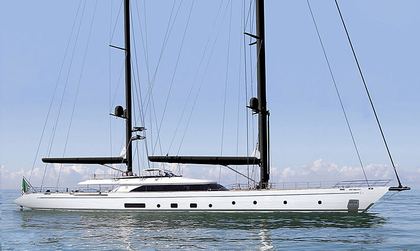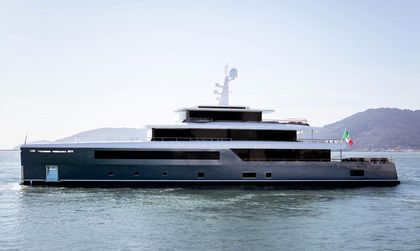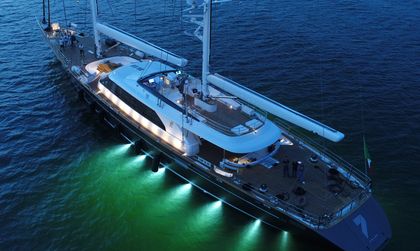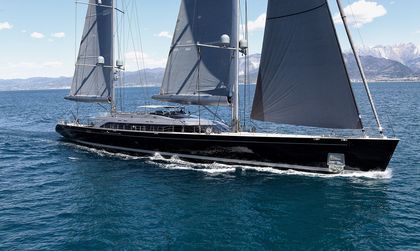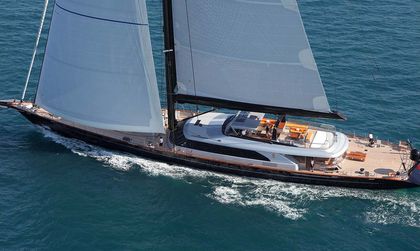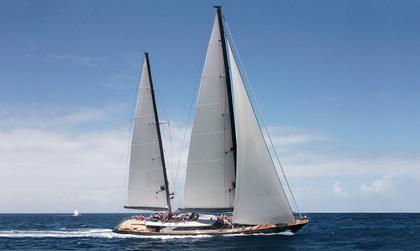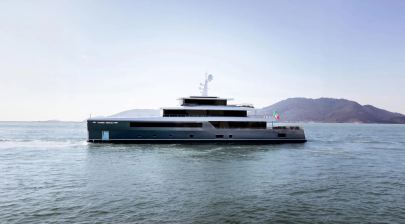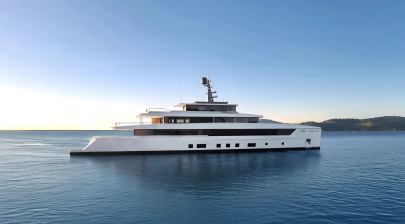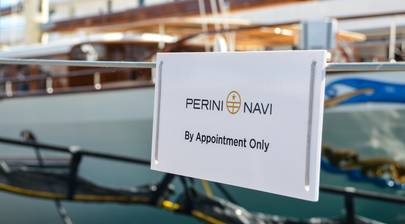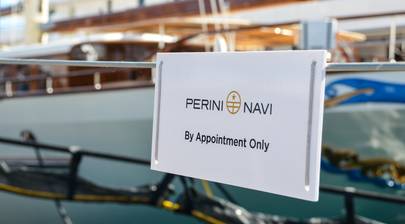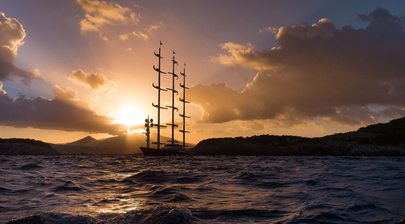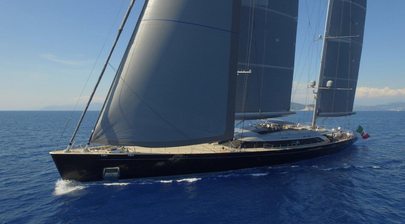-
Guests
12
-
Cabins
6
-
Crew
9
| Length | GT | Built (REFIT) |
|---|---|---|
|
177' 2"
|
460 GT | 2004 (2012) |
| Beam | Draft | Top Speed |
| 35' 1" | 14' 9" | 18 Kts |
The multi-award winning 177'2" sail yacht Parsifal III was delivered to her owners in 2004 by Italian shipyard Perini Navi. Her naval architecture and exterior design comes from the drawing boards of Perini Navi, while Remi Tessier is responsible for her interior design.
Key Features
- High-performance ketch
- Voluminous interiors
- Swim platform can be used for dining
- Sundeck with jacuzzi
Design & Construction
Designed around an aluminium hull and superstructure she features a 35'1" beam and a 14'9" draft. The yacht is built over 2 decks with an internal volume of 460 GT (Gross Tonnes).
Construction started in late 2002. Launched in December 2004 this yacht undertook sea trials over the following months. She was delivered to her owners in April 2005.
Exterior Design
Betty Boop's exterior design is the result of a collaboration between Perini Navi and naval architect Ron Holland. The yacht features a slimline aluminium hull that reduces overall weight by approximately 70 tonnes compared to traditional steel hulls. This design offers enhanced sailing performance, with the capability of reaching speeds up to 18 knots under sail.
The exterior profile of Betty Boop is characterized by clean lines and a classically proportioned ketch structure. The hull displays a seamanlike bow and a long, elegantly curved sheer line that extends aft over a proportioned freeboard to a forward-raked transom. The deckhouse has a rounded design and is topped by a flying bridge, which extends aft to a long sun deck. This sun deck provides shade for the guest cockpit below, which is slightly sunk into the main deck to offer protection from wind and spray.
Weight and drag reduction are key aspects of the design. Betty Boop is equipped with fully retractable bow and stern thrusters, which minimize drag compared to the open-ended tunnel thrusters commonly found on yachts from this yard. The yacht also features a single engine in a midship engine room, contributing to better comfort at sea and improved pitching moments. A single Hundested variable pitch propeller supported by a P-bracket further reduces drag.
The yacht's fixed fin-and-bulb keel, with a moderate draught of 4.5 meters, was chosen for its simplicity and reliability. While this keel design may slightly compromise windward performance, the addition of small winglets on the bulb helps to improve performance when heeled.
On deck, the flying bridge layout includes a pair of delicately curved settees and a full-service bar, shaded by a dismantleable bimini. The aft deck features a large, raised spa pool surrounded by mattresses and a teak spillway, catering to sunbathers. The aft cockpit includes a circular dining table that can be expanded to seat up to 24 guests and a full-service bar with a teppanyaki-style barbecue. Windbreaks can be provided by raising armoured-glass windows from the cockpit edge.
The concealed tender well in the foredeck can carry a 6.3-meter Novurania RIB, while a second tender is stored in a large garage in the stern, accessed through a bottom-hinged door. The stern door mechanism also allows for the creation of a bathing platform that can be positioned at various heights above sea level.
Interior Design
Betty Boop's interior design by Rémi Tessier distinctly departs from traditional yacht layouts. The space is dominated by rich dark woods and contrasting pale tones of sycamore, cream leather, and stainless steel. The main saloon is an expansive area that extends to the wheelhouse windows 17 meters away, eliminating the usual compartmentalization found in other yachts.
The saloon features minimalistic furnishings, including a semicircular leather sofa that can be reconfigured for various seating arrangements. This sofa rides on a circle of rails, allowing for positioning at any point. The saloon also includes cabinets surrounding the stairs to the accommodation, a bar, and a dining table forward. The dark wenge floor is accentuated by highly polished stainless steel stairways and floating cabinets, creating a sense of openness.
The bar area is notable for its attention to detail. Wine coolers and cabinets are concealed behind gracefully curved panels that slide open at a touch. The bar itself, supported on stainless pillars, appears to float above the floor. The saloon's lighting is carefully designed, with subtle cove lighting and downlighters picking out high points, creating an inviting atmosphere.
The wheelhouse, normally an extension of the saloon, transforms into a functional control center at the touch of a button. When the yacht is at rest, the wheelhouse is devoid of visible instrumentation, presenting a sleek, flat panel of black glass. However, this changes when needed; seven screens and an array of engine and navigation controls become visible through the glass panel.
The guest settee in the wheelhouse can be lowered electrically to ensure optimal forward visibility. Manual chartwork is facilitated on an ebony-topped desk, while communications equipment is hidden in lockers beneath the side windows.
The interior space is further enhanced by the use of high-quality materials. The stainless steel knobs, leather-covered drawers, and finely detailed furniture add to the yacht's understated elegance. The use of materials like white leather, teak, and stainless steel creates a cohesive link between the interior and exterior spaces.
Accommodation
Betty Boop offers accommodation for up to 12 guests across 5+1 cabins. The master cabin, located aft, spans the full beam of the yacht and features a king-sized bed with a Fendi bedspread made from mink fur. The master suite includes an open-plan bathroom with a spa bath, dressing table, two head compartments, and three wooden hand basins. The suite can be divided to form an additional bedroom, complete with its own television.
The remaining guest accommodation comprises four cabins: two doubles and two twins, each equipped with pullman berths. Every cabin is adorned with black-and-white art photographs and features high-quality detailing such as mink bedspreads and leather-covered drawers for valuables. An innovative feature includes television screens concealed behind special glass mirrors, visible only when turned on.
Crew accommodationfor up to nine is also thoughtfully designed, with a high standard of finish. The crew quarters include a large mess, a double-bedded cabin for the captain, a triple-bunked cabin, and two twin-bunked cabins, each with en suite shower rooms, ensuring comfort and privacy for all onboard.
Performance & Capabilities
When not under sail, Betty Boop's propulsion system relies on a single diesel Caterpillar (C30) 12-cylinder 1,258hp engine running at 2300rpm, strategically placed in a midship engine room to enhance comfort at sea and optimize the yacht's pitching moment. The engine's location and the relatively short shaft leading to the Hundestedt variable pitch propeller are decisions that reduce drag and demonstrate a clear preference for sailing performance. This setup, paired with retractable bow and stern thrusters that replace the typical open-ended tunnel thrusters, minimizes resistance through the water and contributes to the vessel's enhanced maneuverability and speed.
Betty Boop confidently strides through the waves with an aluminum hull that significantly reduces her overall weight by approximately 70 tonnes compared to traditional Perini Navi steel hulls. The lighter construction contributes to her agility and ease of handling, allowing the yacht to make the most of its powerful ketch rig built from lightweight carbon fiber. With a set of sails crafted by North's Italian loft, Betty Boop has already proven capable of exceeding the anticipated 18 knots, hinting at even greater potential speeds.
The yacht's performance is further refined by a fixed fin-and-bulb keel with a moderate 4.5-meter draught, a design choice favoring simplicity and reliability over the more complex centerboard system. The addition of small winglets on the bulb provides an effective increase in apparent draught, thereby improving windward performance when the yacht is heeled.
Amenities
Air conditioning offers increased on-board comfort. Parsifal III also features a deck jacuzzi for cooling off and an inviting spread of sunpads.
Parsifal III Yacht is not For Sale
Sailing yacht Parsifal III is off the market at the moment, but you can browse other new & used yachts for sale across the globe using YachtBuyer’s Market Watch.
If you're the yacht owner, broker, or captain, please use the "Update Sales Info" link to report any changes to the sales information. Update Sales Info
